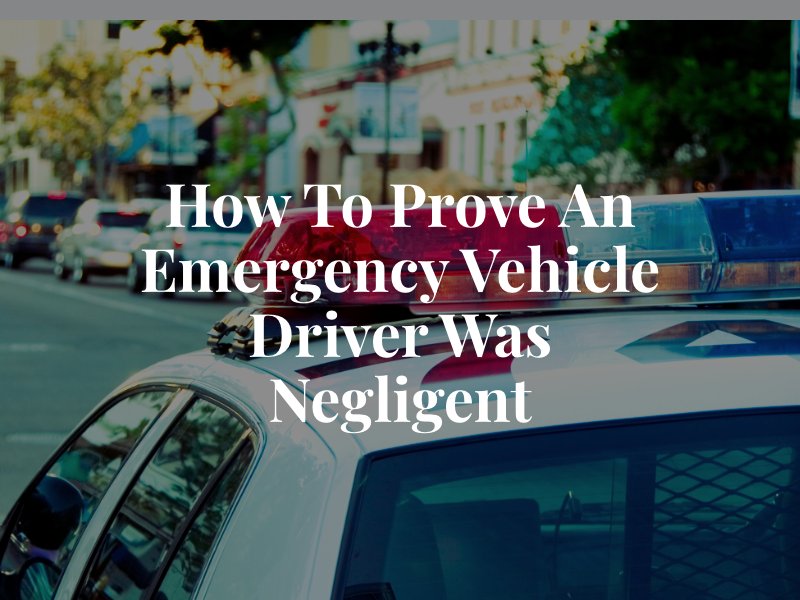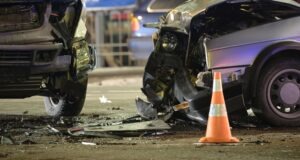Accidents involving emergency vehicles – such as ambulances, fire trucks, or police cars – can leave victims feeling confused about liability. When these vehicles are on the road for urgent reasons, determining who is responsible for an accident becomes more complex. While emergency vehicles have certain privileges during emergencies, liability may still fall on them or on other parties, depending on the situation. Understanding the nuances of these cases is essential for anyone involved in a car accident with an emergency vehicle.
General Immunity
Emergency vehicle drivers are usually protected by some level of immunity since they are performing their duties for government agencies like the city, county, or state. This protection recognizes the crucial work they perform under urgent conditions. The law generally shields them from liability while they are responding to emergencies.
Exceptions to Immunity
There are limits to this immunity. If an emergency vehicle driver acts recklessly or with a disregard for safety, the protection may not apply. For example, if their behavior shows a blatant lack of caution, they can be held responsible for accidents even during emergency responses.

Your Case Will Get
The Attention It Deserves

Examples of Negligent Actions That Can Lead To Liability
Some of the actions an emergency vehicle driver might take that could lead to liability include:
- Failing to take extra care in heavy traffic or at intersections
- Speeding or not heeding traffic signs when lights and sirens are not properly used
- Making a high-speed turn that puts others at risk
- Not stopping when pedestrians are present on a walkway
- Driving under the influence of alcohol or drugs, or while extremely fatigued or distracted
These exceptions show that while emergency responders are granted immunity for performing their duties, they are still expected to drive safely and responsibly.
Who Is Typically Liable in an Accident with an Emergency Vehicle?
Accidents involving emergency vehicles often raise questions about who is responsible. When these incidents occur, liability can fall on different parties depending on the facts and the behavior of everyone involved. Here’s how this often looks:
Emergency Vehicle Driver
Emergency vehicle drivers have a duty to operate their vehicles responsibly, even when responding to emergencies. Although they are permitted to speed, run red lights, or use sirens to clear traffic, they must do so in a way that minimizes danger to others. If an emergency vehicle driver acts negligently or recklessly, they may be held liable for an accident.
Negligence in this context could mean failing to assess the safety of an intersection before speeding through a red light or driving far above the speed limit in heavy traffic without turning sirens on.
Other Drivers on the Road
Other drivers also play an important role in preventing accidents with emergency vehicles. By law, drivers are required to yield the right of way to approaching emergency vehicles, usually by pulling over or slowing down when it is safe to do so.
- (a) Upon the immediate approach of an authorized emergency vehicle, when the person who drives the authorized emergency vehicle is giving audible signal by siren or displaying alternately flashing red, red and white, or red and blue lights, a person who drives another vehicle shall do the following unless otherwise directed by a law enforcement officer:
- (1) Yield the right-of-way.
- (2) Immediately drive to a position parallel to and as close as possible to the right-hand edge or curb of the highway clear of any intersection.
- (3) Stop and remain in the position until the authorized emergency vehicle has passed.
If a driver fails to follow these rules – such as remaining in the lane while an ambulance is trying to pass or driving while distracted – they could cause a collision and be found liable.
This duty to make way is crucial for allowing emergency responders to perform their tasks safely and efficiently, and failing to comply can have legal consequences and serious safety implications.
Shared Liability
There are instances where both the emergency vehicle driver and another driver share the blame for an accident. For example, if an emergency vehicle is speeding without activating its sirens and a passenger car fails to yield as required, both parties may be partially responsible. Shared liability cases are governed by comparative negligence laws, which vary by state.
Under Indiana’s comparative negligence laws, a victim can only recover compensation if they are less than 51% at fault for the accident. If their share of the fault is 51% or more, they lose the right to any compensation. For instance, imagine an emergency vehicle crashes into another car while running a red light, but the driver of the car was texting and not paying attention to their surroundings.
If an investigation finds the car driver to be 40% at fault and the emergency vehicle driver 60% at fault, the injured car driver would be eligible to recover damages. However, if the roles were reversed and the car driver was more than 50% at fault, they would be unable to receive compensation in Indiana.
Understanding the nuances of liability in emergency vehicle accidents can help victims better assess their legal options.



Proving Negligence in Emergency Vehicle Accident Claims
Proving negligence is essential when establishing liability in an accident, and there are several types of evidence that can help build your case.
- Eyewitness testimony: Statements from people who saw what happened can provide a clear account of the events leading up to the accident.
- Results of drug or alcohol tests: Alcohol or drug test results can be crucial in showing if impairment played a role in the incident.
- Personnel records and other relevant documents: Records such as driving logs, training certifications, and official reports can help demonstrate whether proper procedures were followed.
Gathering these forms of evidence can strengthen your claim by clearly illustrating how negligence contributed to the accident. If you have any questions about a case against an emergency vehicle driver or anyone else involved in this accident, contact Vaughan & Vaughan Injury Lawyers today to schedule a free consultation with a personal injury attorney.





